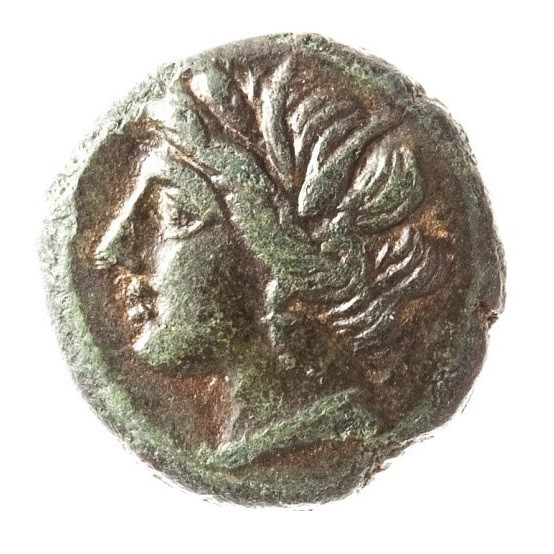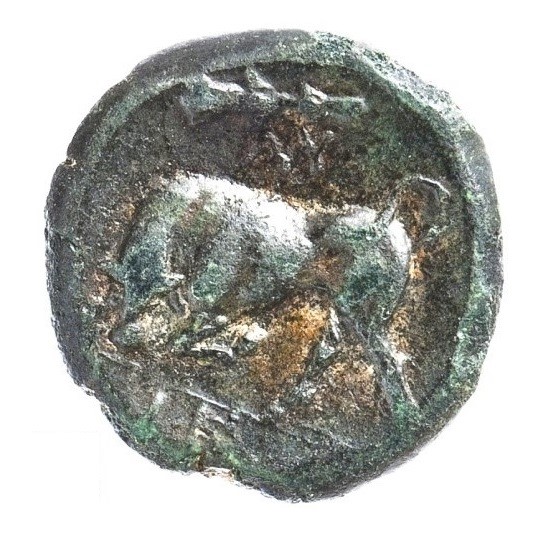Title: Coin of Hieron II of Syrakousai (Syracuse) - 1967.11
Acquisition number: 1967.11
Author or editor: Douglas Kelly
Culture or period: Hellenistic.
Date: 275-215 BC
Material: Metal - Bronze
Object type: Coins - Greek
Dimensions: 16mm (w)
Origin region or location: Italy
Origin city: Syrakousai (Syracuse)
Display case or on loan: 5
Keywords: Coin, Greek, Sicily, Persephone
K.N. Rutter (ed.), Historia numorum: Italy (London, The British Museum, 2001), 6.
Sylloge Nummorum Graecorum, USA, The Collection of the American Numismatic Society (New York, The American Numismatic Society, 1969-), 600.
1967.11
Coin of Hieron II of Syrakousai (Syracuse)
Bronze 3.74 g. 16 mm. 275-215 BC
Obv.: Head of Persephone l., wearing ear-ring, hair rolled and held with ears of grain.
Rev.: Bull pawing ground l. Above, club, below which are letters ΣΥ. In exergue, ΙΕ.
Hieron II of Syrakousai (‘II’ because this Hieron falsely claimed descent from the great fifth-century tyrant of that name) began as an elected general of his city, seized power in a coup and was proclaimed king c. 275-271 BC. Syrakousai, one of the largest cities in the Greek world and the biggest Greek power in Sicily, had seen a number of tyrants in the previous two centuries who had purported to be constitutional rulers of a sort. After the successors to Alexander’s empire began to style themselves kings in 305 BC, this title was uniformly adopted even by petty dynasts with enough territory to justify the title. A basileus reigning in only a small polis would have cut a poor figure but Syrakousai was large enough to make one credible. Agathokles (reigned 319-289 BC) had been the first Syrakousan tyrant to put his name and also his title, Basileus,on thecoinage. Hieron followed suit on his silver coinage but on his bronze coinage he put only his name (here represented by its first two letters IE). Why he should have so chosen remains unexplained.
ΣΥ stands for ΣΥΡΑΚΟΣΙΩΝ, ‘of the Syrakousans’, which is the traditional legend on coins of Syrakousai when it was a constitutionally governed state. This same legend remained in use under every tyranny, including Hieron’s. Apparently, the rule of these dynasts was regarded, by themselves at least, as compatible with a constitutional order.
K.N. Rutter (ed.), Historia numorum: Italy (London, The British Museum, 2001), 6.
Sylloge Nummorum Graecorum, USA, The Collection of the American Numismatic Society (New York, The American Numismatic Society, 1969-), 600.

